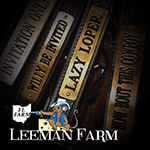With the All American Quarter Horse Congress just a couple of weeks away, there is sure to be some talk about the western pleasure which is notoriously criticized every year. Some will say the event has drastically improved over the past several years while others will say it still has a long way to go.
However, like with anything horse-related, the show must go on and the best we can do as exhibitors is to come prepared with our ‘A’ game.
With this in mind, GoHorseShow sat down with former Ohio-based AQHA Professional Horseman and NSBA World and Congress Champion western pleasure trainer, Wade Black, to get his take on ten things you can do to improve your performance in the pleasure pen at the Congress.
1) Avoid “Slow Ohio”
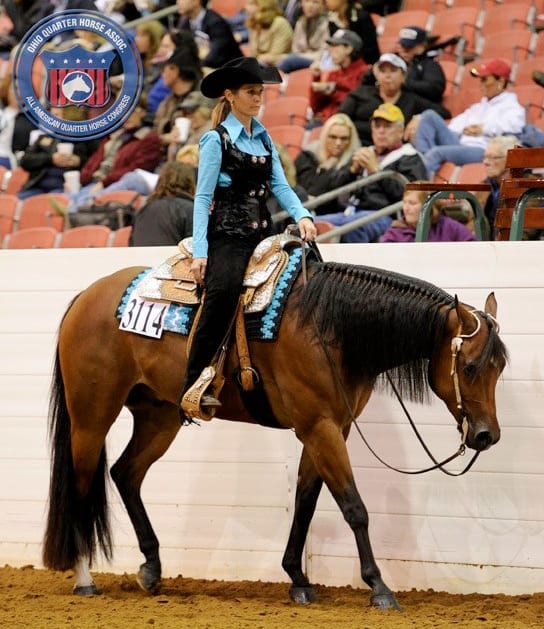 It is not a big secret that pleasure horses at the Congress are constantly viewed as being too slow.
It is not a big secret that pleasure horses at the Congress are constantly viewed as being too slow.
The show is even nicknamed “Slow Ohio” for that very reason.
But don’t let that psyche you out or intimidate you.
According to Wade Black, “The western pleasure pen at the Congress can tend to be at a slower pace than other shows throughout the year. My advice is to not change your horse’s natural flow to try and accommodate the slower pace. Go the pace that best represents your horse.”
Most of us know that trying to change things (like your horse’s pace) at the Congress doesn’t work, so really the best thing is to not even try.
Show your horse as you always have and have confidence in your ability and your horse’s athleticism.
2) Illusions Don’t Work
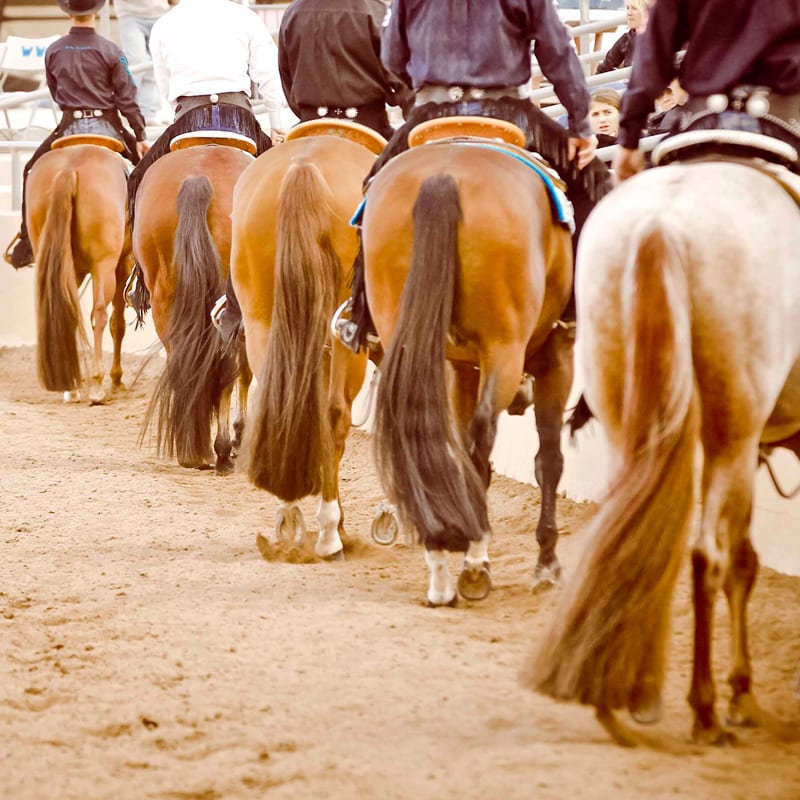 Now, while they work for folks like illusionists David Blaine and Criss Angel, in the horse show world, judges can always tell when you are trying to hide something.
Now, while they work for folks like illusionists David Blaine and Criss Angel, in the horse show world, judges can always tell when you are trying to hide something.
Case in point: overly canting your horse to create the illusion of propulsion.
“A pleasure horse that is using itself properly and driving with its hock will have a natural cant to its hip,” said Black. “Over canting can come from a rider trying to create an illusion of propulsion as when they are over canted, a horse can appear to have more hock and more drive than it truly does.”
Judges know this, so think of over canting your horse like cheating on a test and getting caught.
It isn’t going to work in your favor.
Black suggests working on a nice cadenced gait with flow from back to front to get the true, proper movement desired of a pleasure horse instead of trying to create an illusion that won’t work anyway.
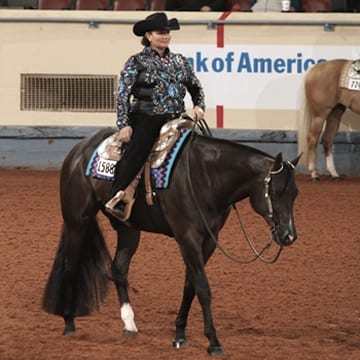 3) Keep Your Rein Length Under Control
3) Keep Your Rein Length Under Control
Yes, this can still be an issue.
Horses that can show well on a draped rein illustrates to the judge that the rider isn’t having to assist in the horse’s movement and the horse is naturally athletic. But don’t get carried away.
Black said, “I feel like pleasure rein length should be at a reasonable drape to showcase the degree of difficulty in the horse carrying itself correctly on its own. Reins that look like they could drag the ground or that swing side to side from being too long don’t earn you extra points, it’s actually distracting.”
The last thing you ever want to do in a pleasure class is to distract the judge away from your horse’s movement.
Don’t let this be you!
4) Head Set, Too
 While most can probably agree that the age of the “peanut rollers” is (hopefully) behind us, horses can still have a tendency to drop their heads a little too low.
While most can probably agree that the age of the “peanut rollers” is (hopefully) behind us, horses can still have a tendency to drop their heads a little too low.
For Black, head set is very important in the pleasure.
“A level head with the nose vertical on a horse that is moving fluidly is very desirable,” he said. “A horse whose head is too low is not going to be able to correctly drive its legs, a level head allows the horse the most opportunity to flow through with it legs.”
Think about that. A horse that is carrying its head too low gets dumpy in the shoulders and drives down instead of across the ground. This is not what is desirable in the pleasure. If you strive for that level head and a vertical nose, your horse’s movement will undoubtedly improve.
5) Stay the Same On and Off The Rail
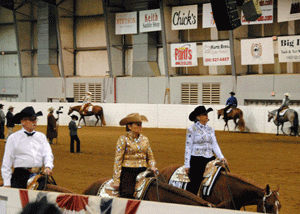 Some may recall the 2015 Arizona Sun Circuit when the AQHA judges called for exhibitors to show 10 to 20 feet off the rail (gasp!) in the Senior Western Pleasure.
Some may recall the 2015 Arizona Sun Circuit when the AQHA judges called for exhibitors to show 10 to 20 feet off the rail (gasp!) in the Senior Western Pleasure.
Since then, the idea of passing (again, gasp!) another exhibitor in the pleasure has become less taboo and there has been quite a lot of discussion on how to best utilize the arena in a pleasure class.
Black said, “A pleasure horse should be able to look the same whether they are on the rail or off of the rail.”
Keeping this in mind, exhibitors should also realize that bunching your horse up on the rail while avoiding passing another exhibitor is not going to show your horse to the best of its ability.
“Rather than trying to stay on the rail and be too close to other competitors, pull off the rail and show just the same as you would on the rail then fall back into the rail when there is adequate space,” said Black.
6) Use Your Warm Up Time at the Congress Wisely
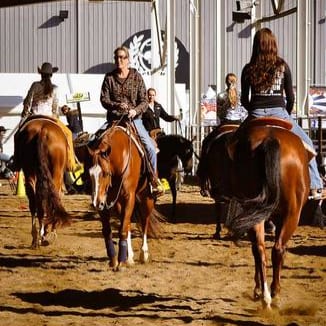 In case you haven’t heard, the Congress is nuts. Crazy. And it is also one of the most difficult shows to warm up your horse.
In case you haven’t heard, the Congress is nuts. Crazy. And it is also one of the most difficult shows to warm up your horse.
Black said the most important thing is to know your horse, first and foremost.
“Warm up pens can get very crowded and chaotic so if you have a horse that is bothered by this, be selective of when you practice and go during a less busy time of day,” he said. “The atmosphere at Congress is much different than a regular show so that can build adrenaline in a horse.”
Black suggests trying not to change your routine too much and riding during times when it’s not too busy.
“Get in the show pen at night to get them used to their surroundings,” he said.
7) Concentrate on Strengths, But Work on Weaknesses
Have you ever seen those little memes on Facebook that say something like:
“What do we want?”
“Lopers!”
“When do we want them?”
“Now!”
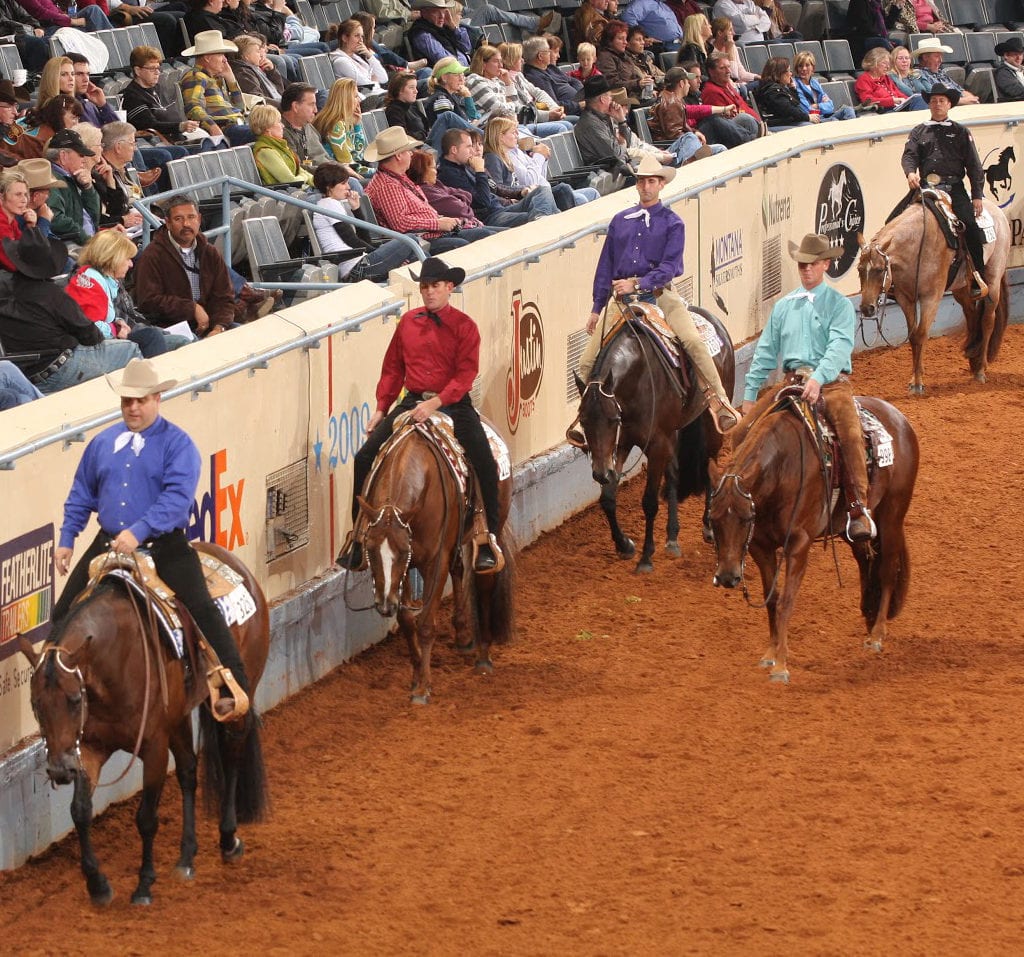 The industry generally breeds for good lopers nowadays and the discussion about where the good joggers are has been had before.
The industry generally breeds for good lopers nowadays and the discussion about where the good joggers are has been had before.
“There are many times you see a horse that can really lope but isn’t the best jogger,” said Black.
However, the idea that a horse can only have a good jog or a good lope is not one we should really entertain. What we should be entertaining is how to improve the gait that our horse is weaker at and how to work with it and showcase it to the best of our ability.
“Sometimes it’s just the way it is,” Black said. “If the horse is a great loper you want that to be the best it can be. But even a mediocre jogger can be cadenced so it’s important to not forget about that.”
Cadence wins classes. So regardless if your horse is a great jogger or a great loper, concentrate on making both of them as cadenced as you can.
8) Make Sure Your Extended Jog is, in Fact, a Different Gate
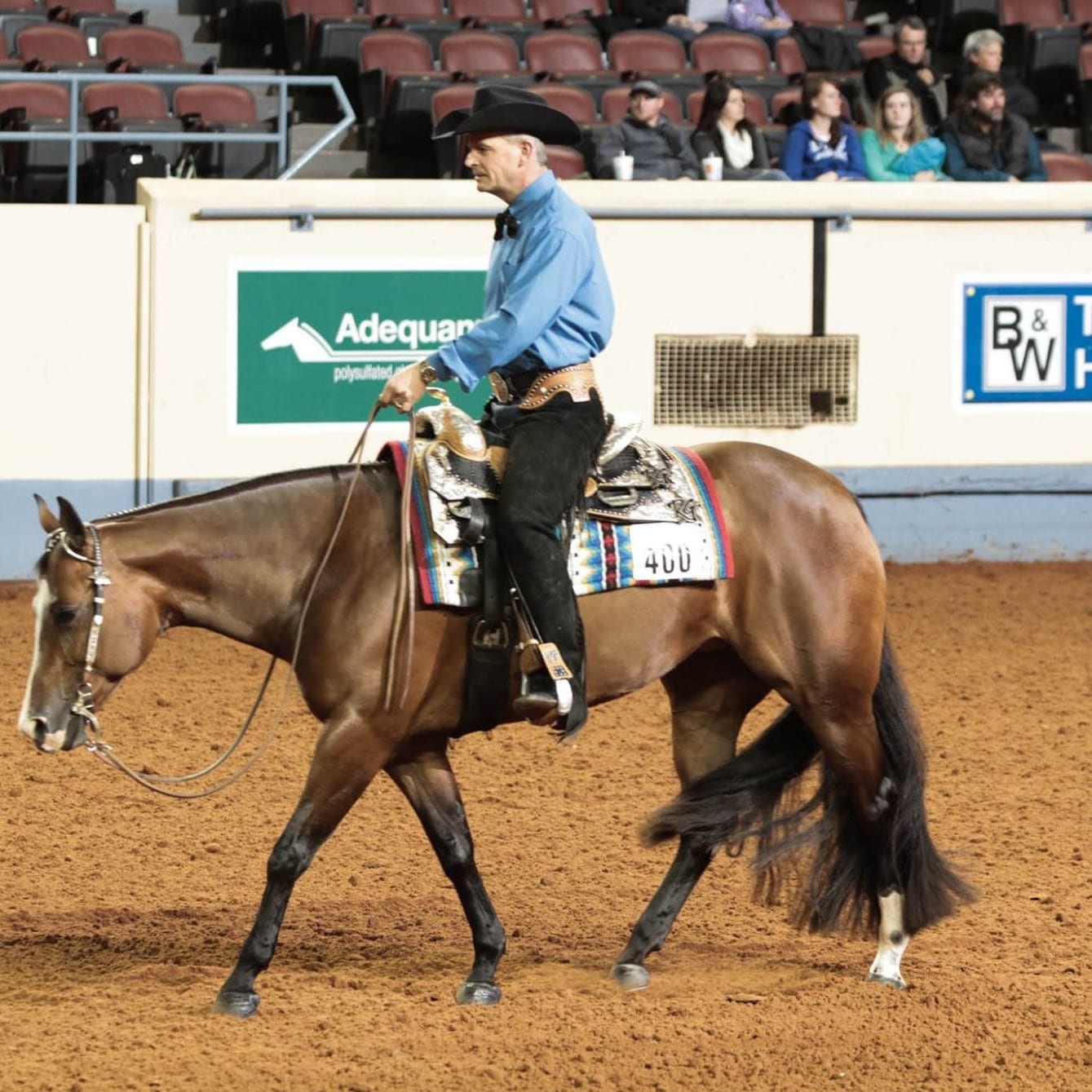 The extended jog is a part of the western pleasure class. It is different than when judges ask for an extension of the walk or the lope.
The extended jog is a part of the western pleasure class. It is different than when judges ask for an extension of the walk or the lope.
When judges ask for extensions of the walk or lope, it is generally because they feel that the pen is not showing their horses at a natural gait.
When judges ask for an extended jog, it is indeed a different gait, and should be treated as such.
“I try to show a true extension of the gait without it looking like I am jogging it off its feet,” said Black. “I want to increase my pace and elongate my stride to show the judge a definite change between the jog and the extended jog but it doesn’t need to be at Mach speed.”
Judges aren’t asking you to start racing around the pen, but they do want to see a difference.
Show it to them.
 9) Don’t Forget About the Back
9) Don’t Forget About the Back
Pleasure horses are supposed to be responsive to the rider’s body.
Black said, “I train my horses to back off my leg to try and alleviate the need the pick your hand up so high, that way the horse also keeps its head level instead of picking it up to back.”
Simple enough. If you haven’t already, train your horse to back off your leg. It’s a much nicer picture.
10) Ask and Repeat
The basis of western pleasure is to introduce horses into the show pen that are capable of going on to the all-around. Pleasure horses should be able to exhibit both rhythm and body control on the rail that carries over into the center of the pen where the all-around classes generally take place.
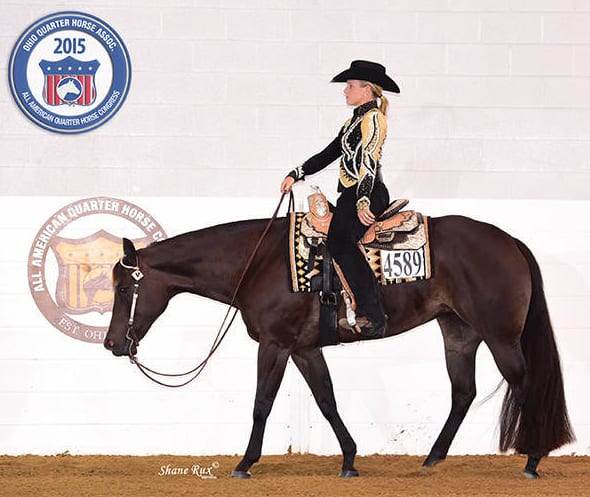 Knowing this, their training generally starts at a young age.
Knowing this, their training generally starts at a young age.
“I always try to teach my horses to learn how to carry themselves correctly without me having to constantly help them,” said Black. “It’s an ask and repeat technique to where eventually they can do it on their own.”
While some horses have more natural self-carriage than others, this is something that can be taught by asking and repeating over and over again.
This is the basis for the pleasure horse in today’s day and age.
Regardless if your next show is the Congress or a small weekend show, these tips will undoubtedly help you excel at the local, national, and world levels.
Thank you, Wade!




